News Tips from AMS 2011
Published: 22 January 2011
Scientists from around the world use data from the U.S. Department of Energy’s Atmospheric Radiation Measurement (ARM) Climate Research Facility to study the interactions between clouds, aerosol, and radiation. At the American Meteorological Society’s Annual Meeting, held this year in Seattle from January 24-28, scientists are presenting dozens of oral and poster sessions describing their research using data from the user facility. Here are just a few:
Patterns connect cloud and climate prediction
New technique links large scale atmospheric processes with specific cloud properties
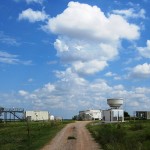 Clouds remain one of the most complex components in the climate system. To improve the accuracy of their use in climate models, scientists need a better understanding of the statistical connection between large-scale climate dynamics and the cloud fields they produce. Researchers from the University of Washington developed a classification technique to identify various atmospheric states and test the statistical significance of each state using cloud radar observations of vertical cloud occurrence. Applying their technique to long-term data centered on the ARM Southern Great Plains (SGP) site in Oklahoma, they connected specific atmospheric states with ground-based quantities such as cloud occurrence, precipitation, liquid water path, cloud optical depth and surface fluxes, and satellite quantities such as fractional cloud cover, top-of-atmosphere fluxes and cloud effect, and retrieved cloud properties. The multi-year record allowed them to investigate both the seasonal and interannual variability of the dynamic patterns, the duration of particular patterns, and the transition probability from any state to another state. The researchers plan to apply this technique to climate model output to determine to what extent they can duplicate the linkage between dynamical states and associated hydrological and radiative properties.
Clouds remain one of the most complex components in the climate system. To improve the accuracy of their use in climate models, scientists need a better understanding of the statistical connection between large-scale climate dynamics and the cloud fields they produce. Researchers from the University of Washington developed a classification technique to identify various atmospheric states and test the statistical significance of each state using cloud radar observations of vertical cloud occurrence. Applying their technique to long-term data centered on the ARM Southern Great Plains (SGP) site in Oklahoma, they connected specific atmospheric states with ground-based quantities such as cloud occurrence, precipitation, liquid water path, cloud optical depth and surface fluxes, and satellite quantities such as fractional cloud cover, top-of-atmosphere fluxes and cloud effect, and retrieved cloud properties. The multi-year record allowed them to investigate both the seasonal and interannual variability of the dynamic patterns, the duration of particular patterns, and the transition probability from any state to another state. The researchers plan to apply this technique to climate model output to determine to what extent they can duplicate the linkage between dynamical states and associated hydrological and radiative properties.
2A.2: On the relationship between large scale dynamics and cloud: a decadal climatology of cloud properties for the U.S. Southern Great Plains. Monday, January 24, 1:45 pm, Room 609.
Simulations assess effect of aerosol particles on convective precipitation
Model sensitivity to aerosol effects found to be small compared to natural variability
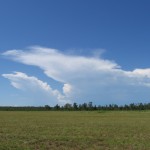 Tiny aerosol particles, such as smoke, dust or other airborne particles affect Earth’s climate in two ways: directly, through scattering and absorption of energy, and indirectly, by influencing the creation of cloud droplets. The extent of these different aerosol effects on Earth’s energy balance is one of the most uncertain aspects of the climate puzzle. Researcher Hugh Morrison from the National Center for Atmospheric Research (NCAR) presents results from simulations of aerosol indirect effects focusing on deep convection and associated outflow cirrus clouds. Using two different modeling frameworks—one with fixed surface characteristics and one with monsoon conditions—simulations were performed with different aerosol loadings to represent either pristine or polluted conditions. In both scenarios, aerosols were shown to have little impact on tropospheric cooling through modification of clouds, indicating that surface precipitation is insensitive to aerosols given the fixed sea surface temperature.
Tiny aerosol particles, such as smoke, dust or other airborne particles affect Earth’s climate in two ways: directly, through scattering and absorption of energy, and indirectly, by influencing the creation of cloud droplets. The extent of these different aerosol effects on Earth’s energy balance is one of the most uncertain aspects of the climate puzzle. Researcher Hugh Morrison from the National Center for Atmospheric Research (NCAR) presents results from simulations of aerosol indirect effects focusing on deep convection and associated outflow cirrus clouds. Using two different modeling frameworks—one with fixed surface characteristics and one with monsoon conditions—simulations were performed with different aerosol loadings to represent either pristine or polluted conditions. In both scenarios, aerosols were shown to have little impact on tropospheric cooling through modification of clouds, indicating that surface precipitation is insensitive to aerosols given the fixed sea surface temperature.
J8.2: Impact of aerosols on cloud system-resolving model simulations of deep convection. Tuesday, January 25, 1:45 pm, Room 605/610.
Study on the seas near Chile? Let’s go!
Researchers use ships, airplanes, and ground sites to study complex climate region
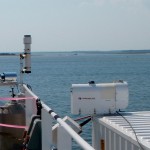 The VAMOS Ocean-Cloud-Atmosphere-Land Study Regional Experiment took place during October and November 2008, and involved five research aircraft, two ships, and two surface sites in northern Chile. In support of the experiment, ARM contributed a 183-GHz microwave radiometer to the research vessel Ronald H. Brown to obtain measurements of liquid water path over the ocean. Scientists are using data from the complete array of research platforms to improve the understanding of the poorly understood, but critical components of the coupled climate system in the southeast Pacific. This region is dominated by strong coastal upwelling, extensive cold sea surface temperatures, and is home to the largest subtropical stratocumulus deck on Earth. Invited speaker Robert Wood from the University of Washington presents early results that address: (a) how aerosols, clouds, and precipitation are inter-related in the southeast Pacific region; (b) what microphysical-macrophysical interactions are necessary for the formation and maintenance of open cells; and (c) how cloud and marine boundary layer properties change across the strong microphysical gradients from the South American coast to the remote ocean.
The VAMOS Ocean-Cloud-Atmosphere-Land Study Regional Experiment took place during October and November 2008, and involved five research aircraft, two ships, and two surface sites in northern Chile. In support of the experiment, ARM contributed a 183-GHz microwave radiometer to the research vessel Ronald H. Brown to obtain measurements of liquid water path over the ocean. Scientists are using data from the complete array of research platforms to improve the understanding of the poorly understood, but critical components of the coupled climate system in the southeast Pacific. This region is dominated by strong coastal upwelling, extensive cold sea surface temperatures, and is home to the largest subtropical stratocumulus deck on Earth. Invited speaker Robert Wood from the University of Washington presents early results that address: (a) how aerosols, clouds, and precipitation are inter-related in the southeast Pacific region; (b) what microphysical-macrophysical interactions are necessary for the formation and maintenance of open cells; and (c) how cloud and marine boundary layer properties change across the strong microphysical gradients from the South American coast to the remote ocean.
J12.1 (invited): The VOCALS Regional Experiment: Aerosol-Cloud Precipitation Interactions in Marine Boundary Layer Clouds. Wednesday, January 26, 10:30 am, Room 605-610. Note: Robert Wood is the recipient of the 2011 AMS Henry G. Houghton Award; see below.
Wind energy on the radar in Washington
Data will help evaluate regional forecasts for similar scenarios
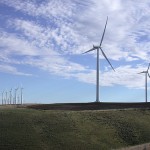 The Eastern Washington Wind Energy Study (EWWES) is being conducted in the vicinity of a wind plant in northeastern Oregon, near the town of Touchet, Washington. Instrumentation for the study includes a 915 MHz radar wind profiler provided by ARM, a Doppler sodar, and several tower mounted sonic anemometers. This study is part of an ongoing government/industry effort focused on providing a multi-season data set that can be used to evaluate model forecasts made for locations in the vicinity of an operating wind plant. The EWWES data will be used to evaluate clear-air winds derived from the National Weather Service radar located in Pendleton, Oregon. Researcher Larry Berg from Pacific Northwest National Laboratory will present an overview of the field study and present some preliminary data. All observations from the study will be made publicly available.
The Eastern Washington Wind Energy Study (EWWES) is being conducted in the vicinity of a wind plant in northeastern Oregon, near the town of Touchet, Washington. Instrumentation for the study includes a 915 MHz radar wind profiler provided by ARM, a Doppler sodar, and several tower mounted sonic anemometers. This study is part of an ongoing government/industry effort focused on providing a multi-season data set that can be used to evaluate model forecasts made for locations in the vicinity of an operating wind plant. The EWWES data will be used to evaluate clear-air winds derived from the National Weather Service radar located in Pendleton, Oregon. Researcher Larry Berg from Pacific Northwest National Laboratory will present an overview of the field study and present some preliminary data. All observations from the study will be made publicly available.
6A: Overview of the eastern Washington wind energy study. Thursday, January 27, 1:30 pm.
Researcher Recognition
Robert Wood Receives Henry G. Houghton Award
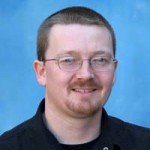
Our congratulations to scientist Robert Wood from the University of Washington on receiving the AMS 2011 Henry G. Houghton Award for advancing understanding of the interactions of cloud droplets, aerosols, radiation, and precipitation in marine stratocumulus. Rob is the principal investigator for the recently completed Clouds, Aerosols and Precipitation in the Marine Boundary Layer field campaign, which deployed the ARM Mobile Facility for 20 months in the Azores and the VOCALS Regional Experiment conducted in 2008 (see invited presentation J12.1 on Wednesday).
The AMS Henry G. Houghton Award is given to an individual in recognition of research achievement in the field of physical meteorology, including atmospheric chemistry. The award is given to promising young or early-career scientists who have demonstrated outstanding ability. Rob is an associate professor in the Department of Atmospheric Sciences at the UW, and is very active in scientific collaborations. For more information, visit his website: http://www.atmos.washington.edu/~robwood/.
Peter Lamb Elected to AMS Council
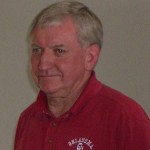
Congratulations to Pete Lamb, Southern Great Plains site scientist, on his recent election to the American Meteorological Society (AMS) Council. This distinguished group consists of the two past presidents and 15 other voting members of the society and serves as the governing board for the 14,000+ member organization. As summarized in his “candidate statement,” Pete is passionate about balance and objectivity among meteorologists and climate scientists. He said that the AMS must “maintain a broad scientific perspective that extends from short-term/small-scale weather phenomena to regional/seasonal climate variability to much longer-term/global climate change.” His election to the council for a three year term (2011-2014) will be certified and made official at the AMS annual meeting in Seattle.
Pete has been the SGP site scientist since 1992 and is the director of the NOAA Cooperative Institute for Mesoscale Meteorological Studies at the University of Oklahoma. His research interest in North Africa’s Subsaharan rainfall was notable in securing the RADAGAST field campaign, which deployed the ARM Mobile Facility to Niamey, Niger, in 2006. He continues to foster that progress through collaborations with the University of Niamey. More about his experience and distinguished contributions can be found with his candidate statement published in the August 2010 Bulletin of the AMS.
# # #
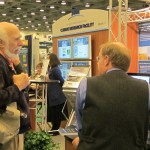 User Facility Exhibit
User Facility Exhibit
The ARM Exhibit showcases streaming data from our research sites across the globe and highlights other key features of this scientific user facility. Visit the display to learn more about the facility and the data scientists use for their research. Or pick up the 2010 Annual Report and other materials that describe ARM’s measurement capabilities, data collections, and field campaigns. Exhibit Hall, Space 719, Tuesday-Friday.
The ARM Climate Research Facility is sponsored by the DOE Office of Science, Office of Biological and Environmental Research. Follow ARM on Facebook and Twitter.
The ARM Climate Research Facility is a DOE Office of Science user facility. The ARM Facility is operated by nine DOE national laboratories, including .
Keep up with the Atmospheric Observer
Updates on ARM news, events, and opportunities delivered to your inbox
ARM User Profile
ARM welcomes users from all institutions and nations. A free ARM user account is needed to access ARM data.


















